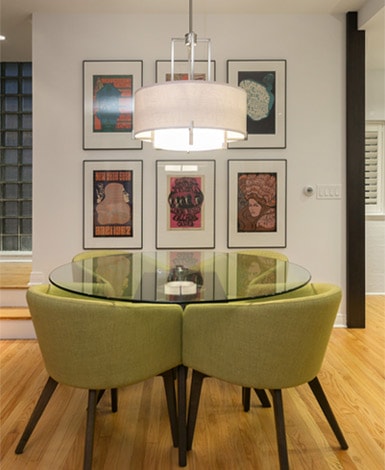A Guide to Choosing Tiles for Bathroom Walls and Floors
When it comes to designing and renovating your bathroom, selecting the right tiles for both the walls and floors is a crucial decision. Tiles not only play a functional role in protecting your bathroom from moisture but also have a significant impact on the overall aesthetics of the space. With a wide range of options available in terms of materials, colors, sizes, and patterns, choosing the perfect tiles for your bathroom can be a delightful yet challenging task. This guide will help you navigate through the process and make an informed decision.
Choosing Tiles for Bathroom – Short Guide
Here are some tips to help you choose the tiles for your renovated bathroom,
- Consider the Material
- Consider the Location
- Choose a Color Palette
- Select the Right Size and Pattern
- Consider Maintenance
Material
The first and foremost consideration when choosing tiles for your bathroom is the material. There are various options available, each with its own set of advantages and disadvantages. Common materials include:
- Ceramic Tiles: These are popular for their durability, affordability, and easy maintenance. They come in a wide range of colors and patterns, making them versatile for bathroom designs.
- Porcelain Tiles: Similar to ceramic tiles but denser and less porous, porcelain tiles are highly resistant to water, stains, and scratches. They are an excellent choice for bathroom floors.
- Natural Stone Tiles: Materials like marble, granite, and travertine add a touch of luxury to your bathroom. However, they require more maintenance and can be prone to staining.
- Glass Tiles: Glass tiles can provide a unique and reflective surface, adding a touch of elegance to your bathroom. They are great for accent walls and shower niches.
- Mosaic Tiles: Mosaic tiles, which can be made from various materials, offer endless design possibilities. They are commonly used to create intricate patterns and artistic designs.
- Vinyl Tiles: These are a budget-friendly and moisture-resistant option for bathroom floors. They come in a variety of styles, including wood and stone-look designs.
Location
Different areas of your bathroom may require different types of tiles:
- Walls: When selecting tiles for bathroom walls, consider factors like moisture resistance and ease of cleaning. Larger tiles are typically easier to clean and can make the space appear larger, while smaller tiles can create intricate patterns.
- Floors: Bathroom floor tiles should be slip-resistant to ensure safety, especially in wet conditions. Porcelain or ceramic tiles with textured surfaces are excellent choices. If you prefer the look of natural stone, ensure it has a textured finish to prevent slips.
- Shower and Bath Surrounds: For areas prone to high moisture levels, like shower and bath surrounds, opt for tiles that are specifically designed for wet environments. Subway tiles and large-format tiles are popular choices for these areas.
Color Palette
The color of your bathroom tiles plays a crucial role in the overall design and ambiance of the space. Lighter colors can make a small bathroom feel more open and airy, while darker colors can create a cozy and intimate atmosphere. Neutral colors are timeless and versatile, while bold and vibrant colors can add a pop of personality. It’s essential to consider the color scheme and the natural lighting in your bathroom when making your choice.
Right Size and Pattern
Tile size and pattern can significantly impact the visual appeal of your bathroom. Consider the following guidelines:
- Small bathrooms: Use larger tiles to create an illusion of space and minimize grout lines, which can make the room look busier.
- Larger bathrooms: Experiment with various tile sizes and patterns, such as herringbone or diagonal layouts, to add visual interest.
- Accent tiles: Incorporate accent tiles sparingly to create focal points, such as a decorative border, a niche in the shower, or a feature wall.
- Grout color: The color of the grout can influence the overall look. Dark grout can create a contrasting and dramatic effect, while light grout can provide a seamless and clean appearance.
Maintenance
Bathroom tiles require regular cleaning and maintenance. While some materials, like porcelain and ceramic, are relatively low-maintenance, others, like natural stone, may need periodic sealing. Ensure you choose tiles that align with your maintenance preferences and schedule.
To summarize,
Selecting the right tiles for your bathroom walls and floors is a critical decision that can impact both the aesthetics and functionality of the space. By considering the material, location, color palette, size, pattern, and maintenance requirements, you can make an informed choice that suits your personal style and the needs of your bathroom. With careful consideration and a creative touch, you can transform your bathroom into a beautiful, functional, and inviting space.
Have additional questions on the subject? feel free to contact us








